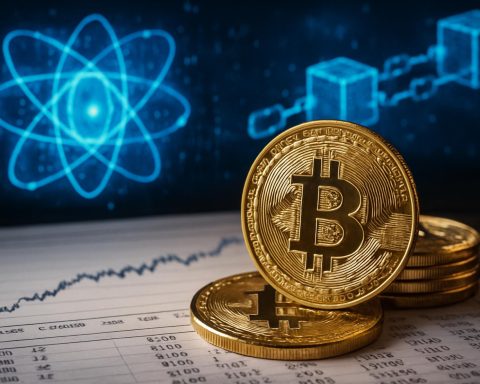This Overlooked Strategy Could Supercharge Clean Energy Worldwide—And Unlock Massive Profits for Investors
Redirecting foreign mining investments could transform cobalt-rich nations into clean energy leaders and power the next energy revolution.
- 40% of foreign mining investment, if redirected, could dramatically boost local clean energy in mineral-rich nations.
- 50% of mineral production in key countries is controlled by foreign direct investment.
- Critical minerals like cobalt and nickel are essential for electric vehicles and solar tech.
- Clean economy investments now outperform fossil fuels in long-term growth.
A blockbuster new study reveals a surprisingly simple strategy that could reshape the global clean energy map: rerouting just a fraction of foreign mining investments. Countries teeming with critical minerals—think the Democratic Republic of Congo, Indonesia, and South Africa—could leapfrog into renewable energy superpowers by redirecting existing cash flows.
The research, released in Nature‘s Communications Earth & Environment journal, sheds light on a hidden opportunity: half of these nations’ lucrative mineral production is bankrolled by foreign investment, mostly from wealthier nations focused on exporting minerals for electric vehicles, batteries, and solar panels. But, ironically, these mineral-rich countries remain stuck with outdated, polluting energy systems at home.
Why Are Mineral-Rich Nations Still Energy Poor?
Despite holding the world’s largest reserves of cobalt and nickel—ingredients that fuel the world’s clean tech boom—the Democratic Republic of Congo and peers still burn oil and coal for most of their electricity. Decades of foreign-controlled mining have moved profits and resources abroad, instead of sparking local clean energy revolutions.
The latest findings suggest this is a missed opportunity of global proportions.
How Can Redirecting Investments Change the Game?
Researchers crunched the numbers and found that shifting just 40% of foreign direct investment from mining exports to domestic clean energy projects could be transformative.
The impact? A surge in new jobs, stronger local economies, and the creation of solar, wind, and battery infrastructure right where mineral wealth is already unlocking global green growth. This pivot would not only help these nations reduce their reliance on imported fossil fuels but build a more resilient, diversified energy grid.
What Does This Mean for Investors?
Clean energy isn’t just good for the planet—it’s a golden ticket for investors. According to global financial analysis, clean economy investments are now consistently outperforming traditional fossil fuel portfolios on long-term returns. Investors and funds looking ahead to 2025 are increasingly prioritizing projects that combine profit with sustainability targets.
By backing renewable developments in emerging markets—and not just extracting resources—investors could tap into a wave of innovation, fresh markets, and future-proof returns. Learn more about the clean economy at Bloomberg and investing in green tech at Morningstar.
Q&A: How Does This Benefit Global Supply Chains?
Q: Can boosting clean energy in mining countries help the world go green?
A: Absolutely. Strengthening local clean energy grids means more stable mineral supplies for electric cars, solar panels, and batteries—while shrinking the world’s reliance on coal and oil.
Q: Will this slow down international partnerships?
A: No. The study suggests it will do the opposite, creating fairer, more sustainable economic ties and leveling the playing field between nations.
How-To: Invest In the Clean Economy and Make a Real Difference
1. Research clean energy stocks and funds.
2. Consider switching to environmentally responsible banks.
3. Support companies prioritizing local energy projects in mineral-rich regions.
4. Stay updated through trusted sources like Reuters and respected newsletters.
Ready to profit from the clean energy revolution and support a fairer world? Start today with these action steps:
- Track where your investments are flowing—opt for clean energy development, not just extraction.
- Prioritize mutual funds and banks that support renewables in emerging markets.
- Share this strategy with your network to spark broader change.
- Sign up for a free sustainability newsletter to stay ahead of 2025 green investing trends.
Make your money work for a cleaner, more resilient planet—and help unlock the world’s next energy boom. Don’t wait. Check off your clean energy to-do today!










